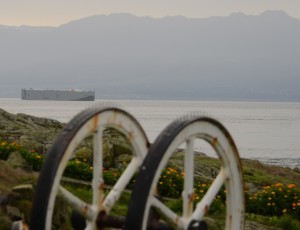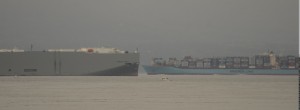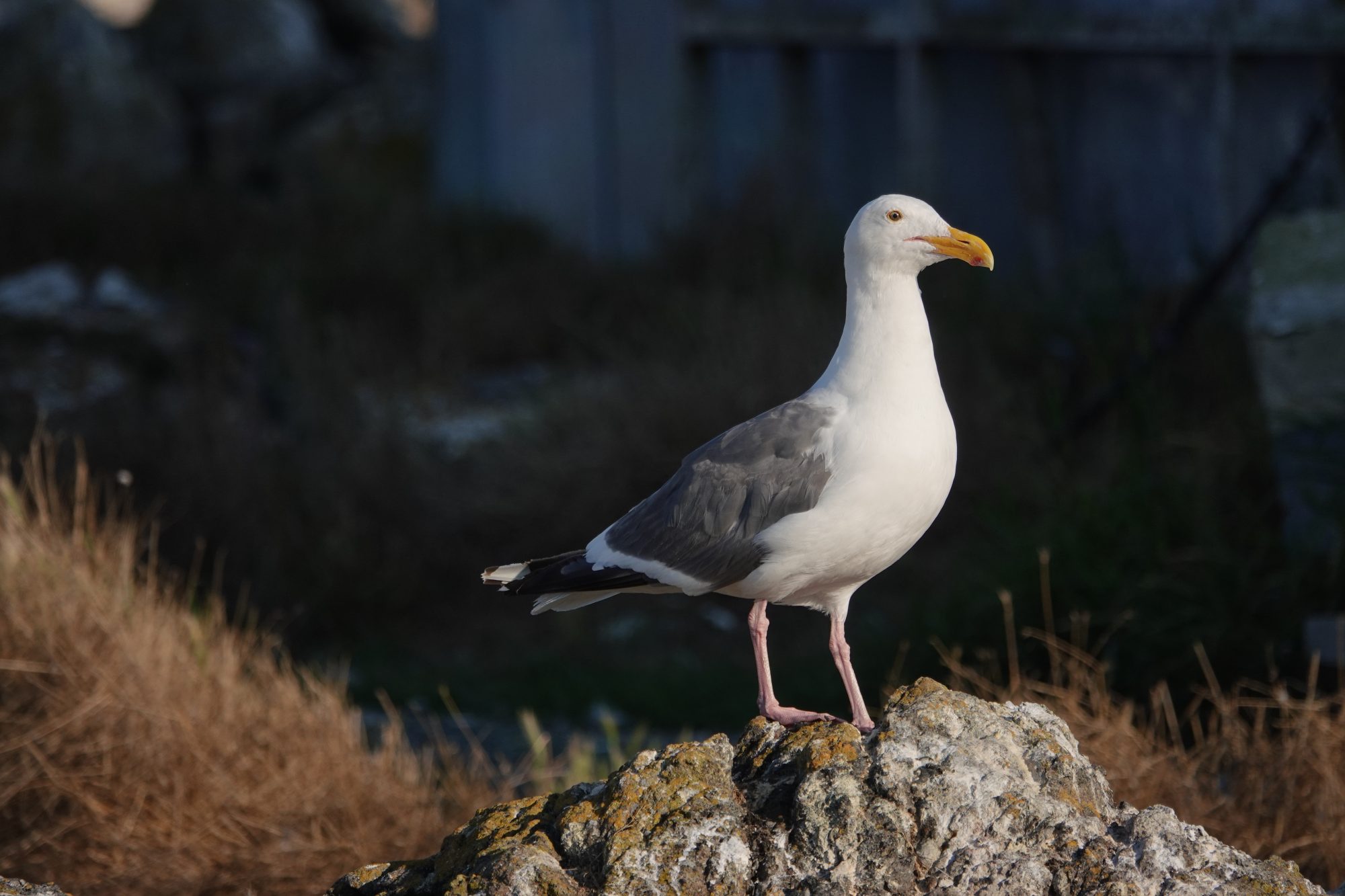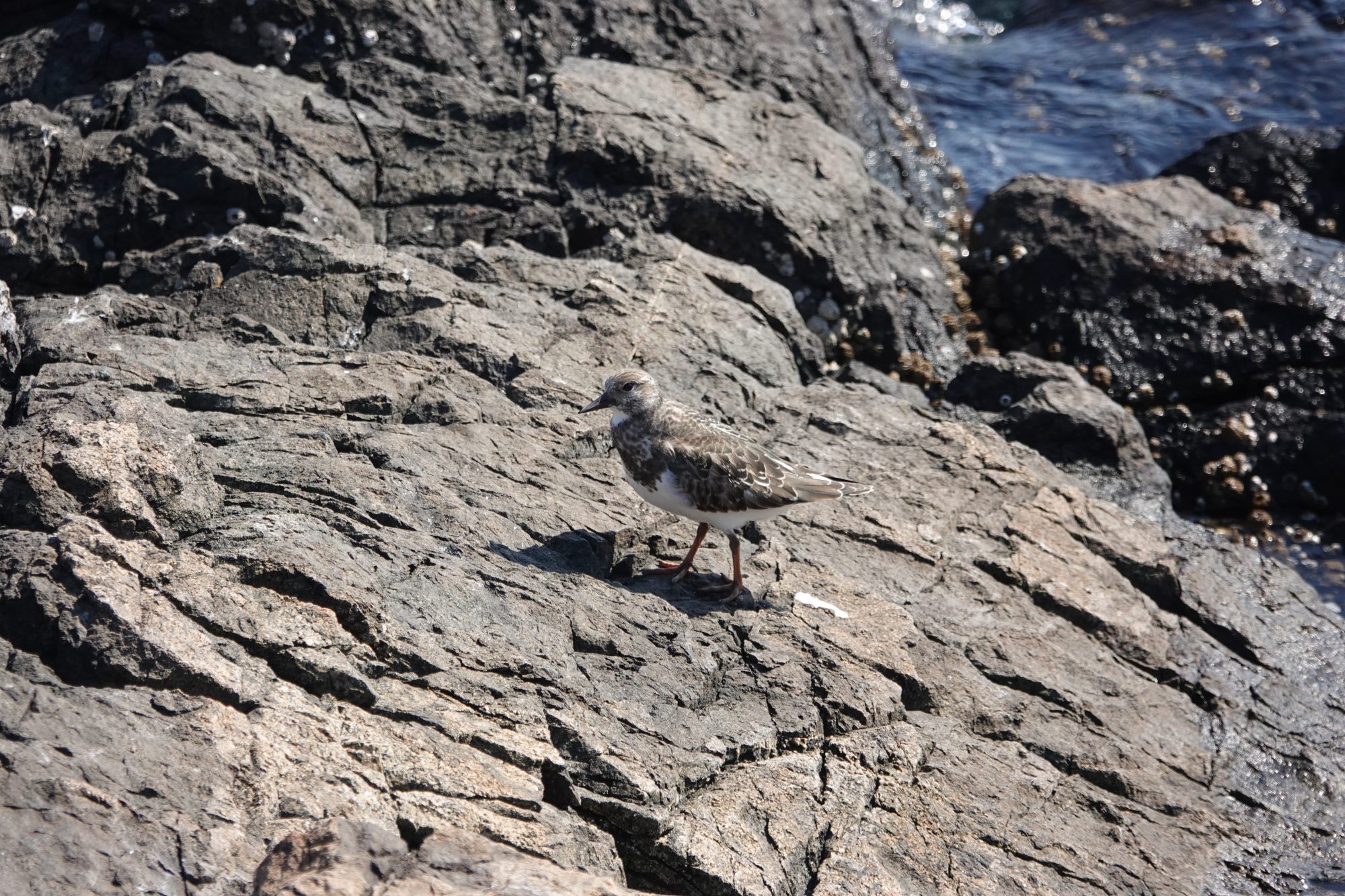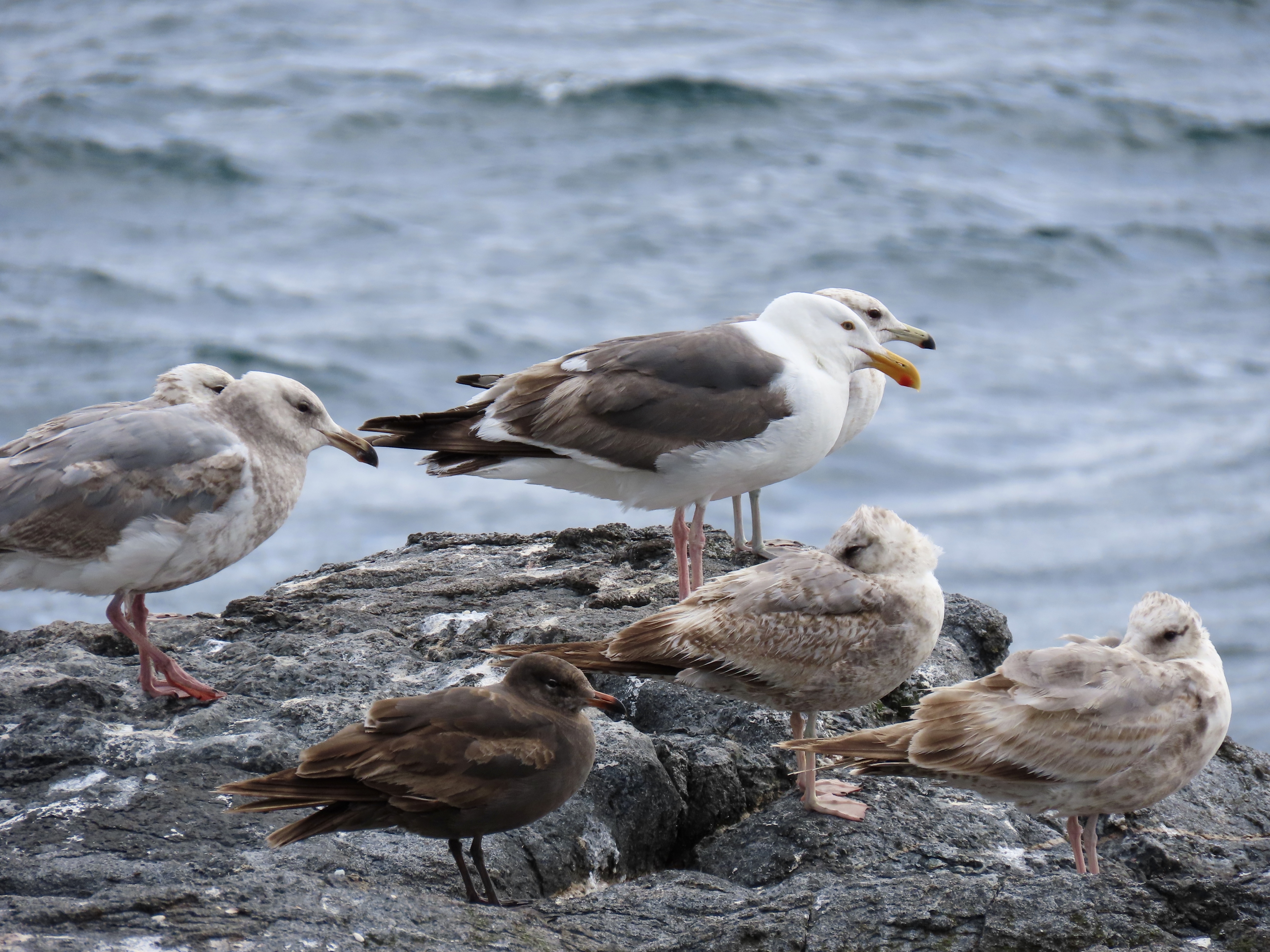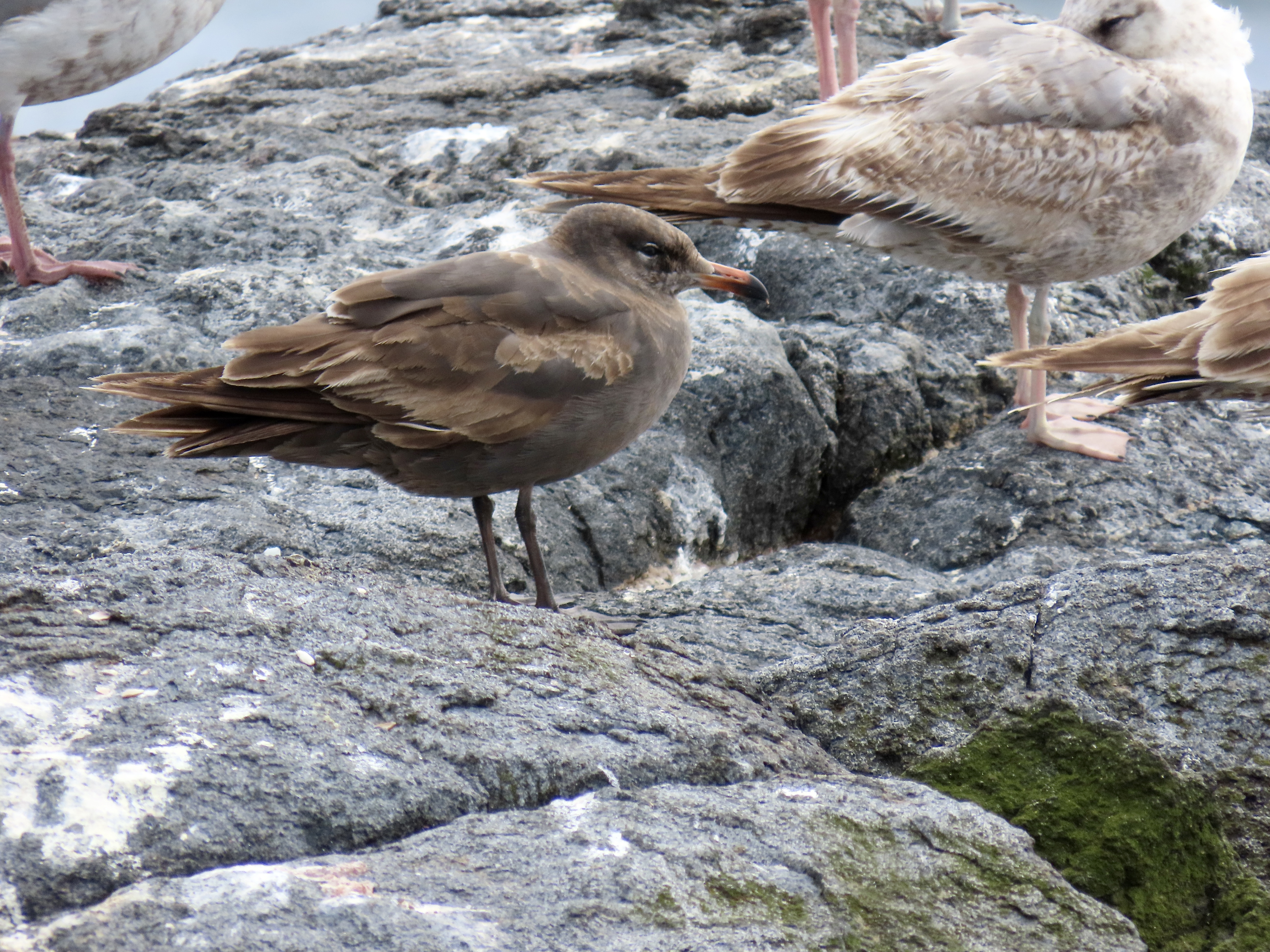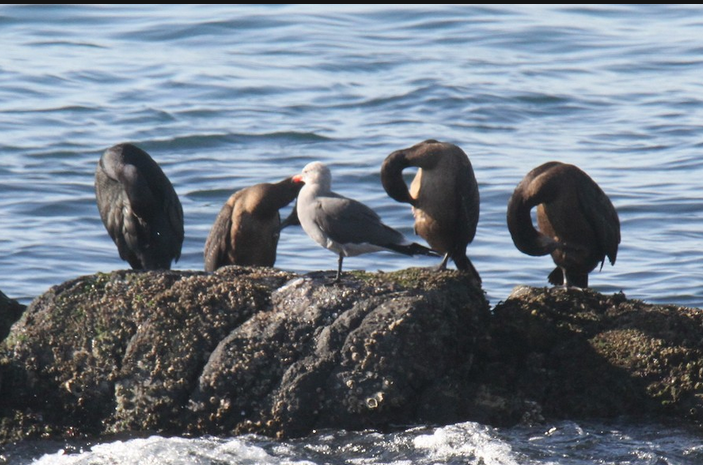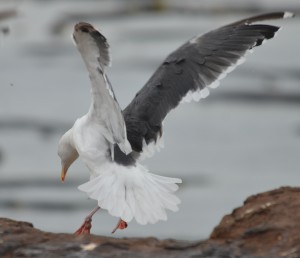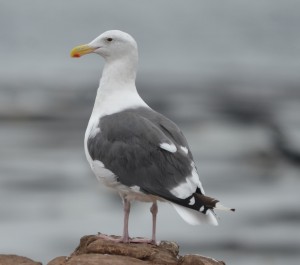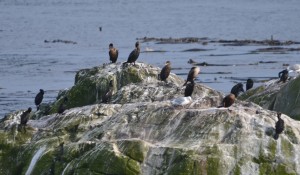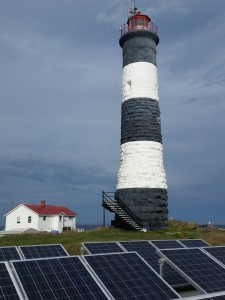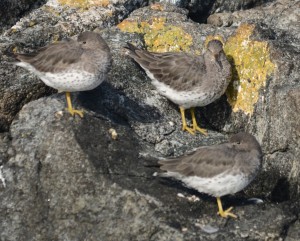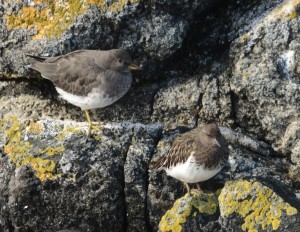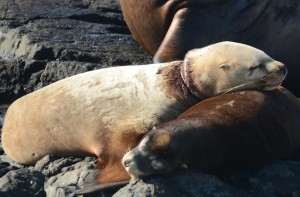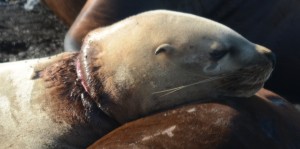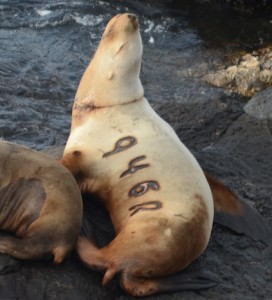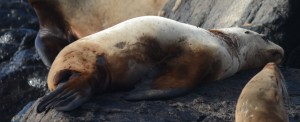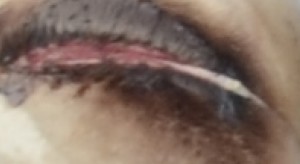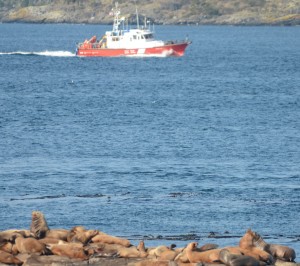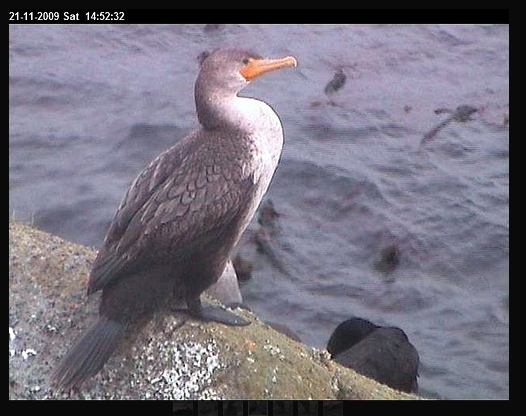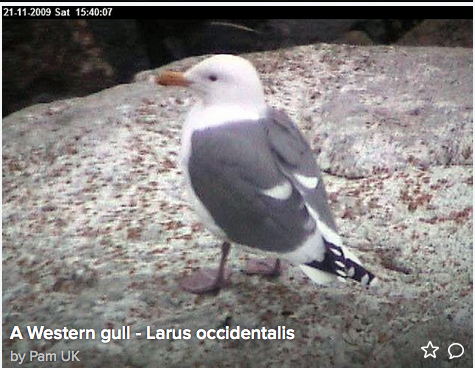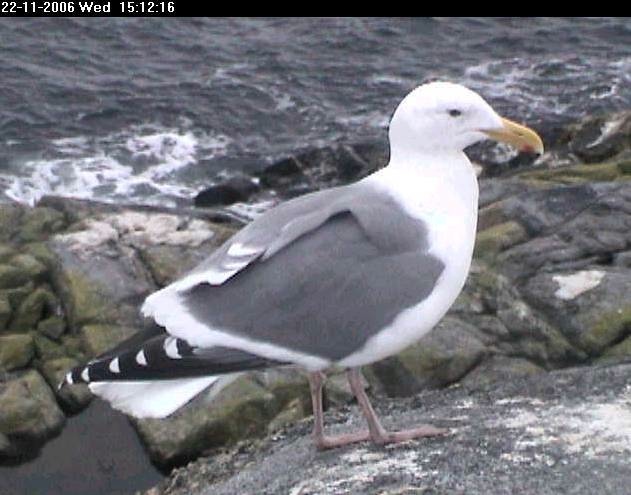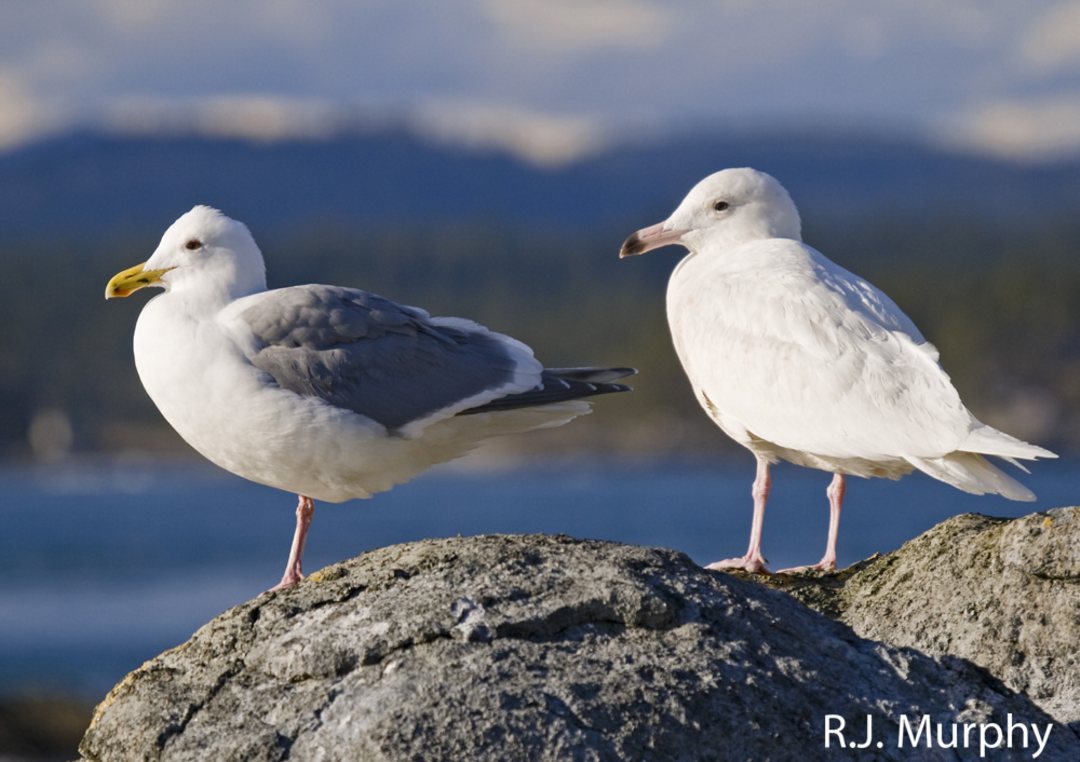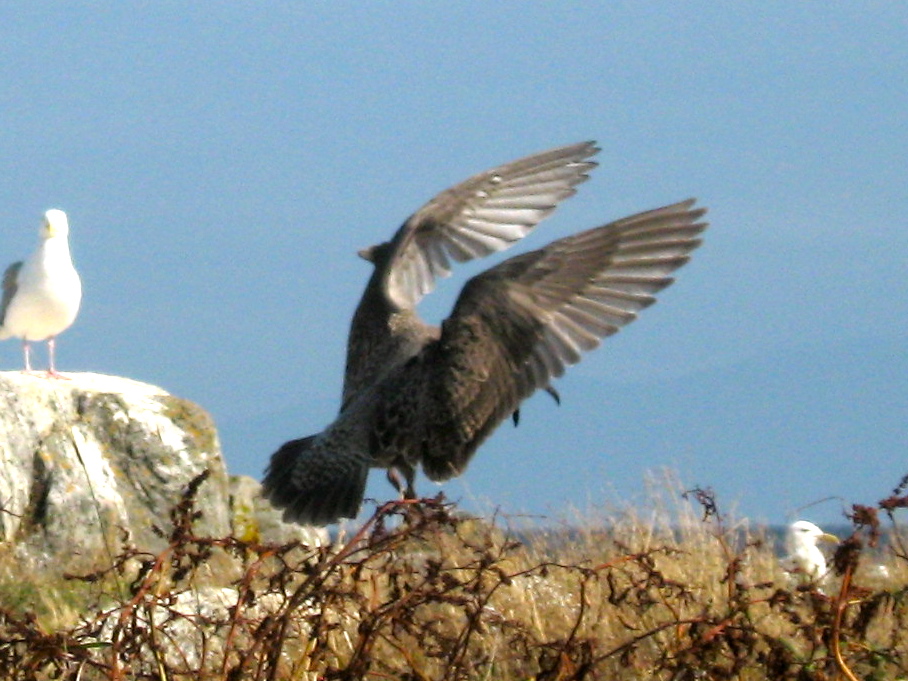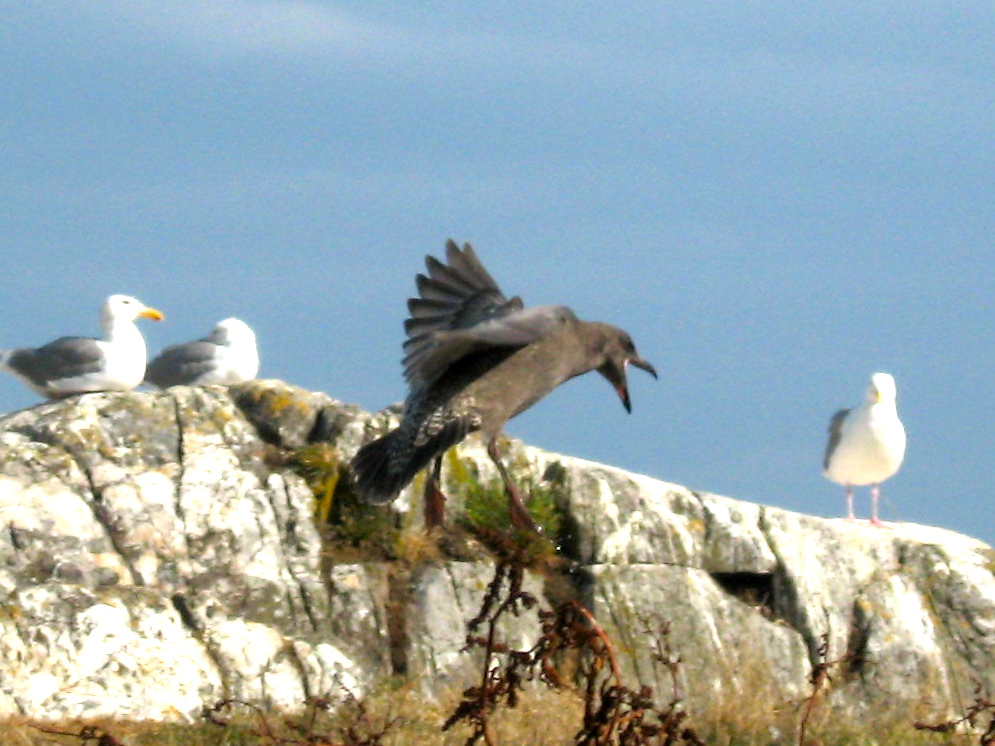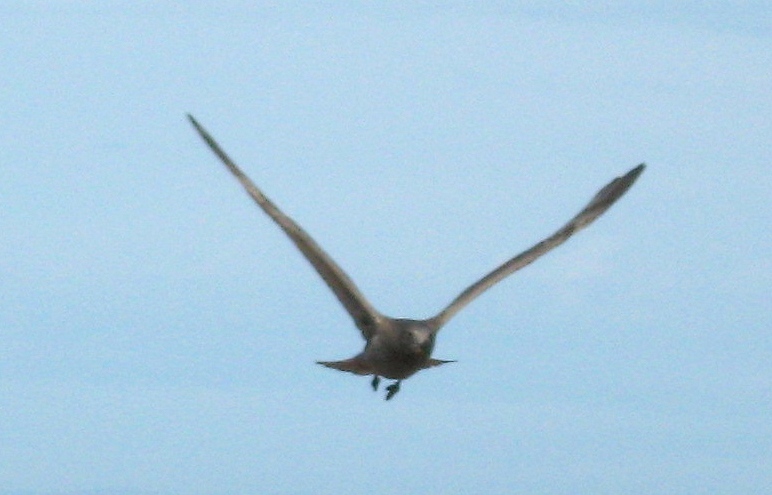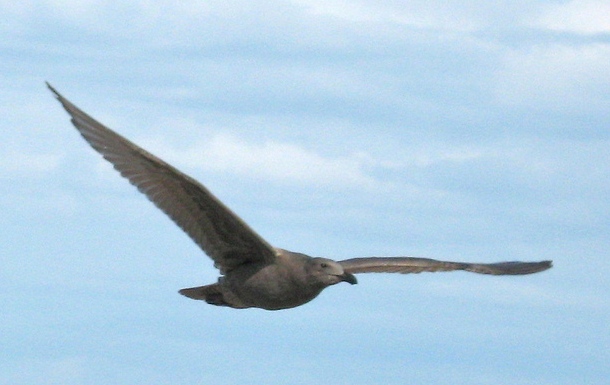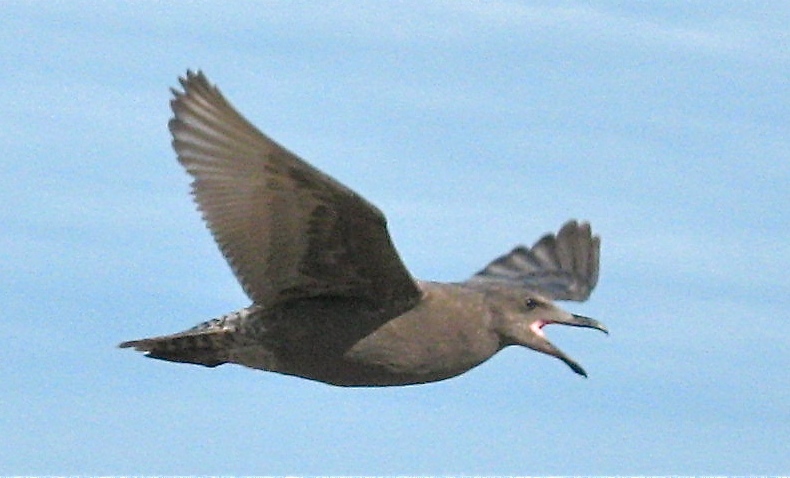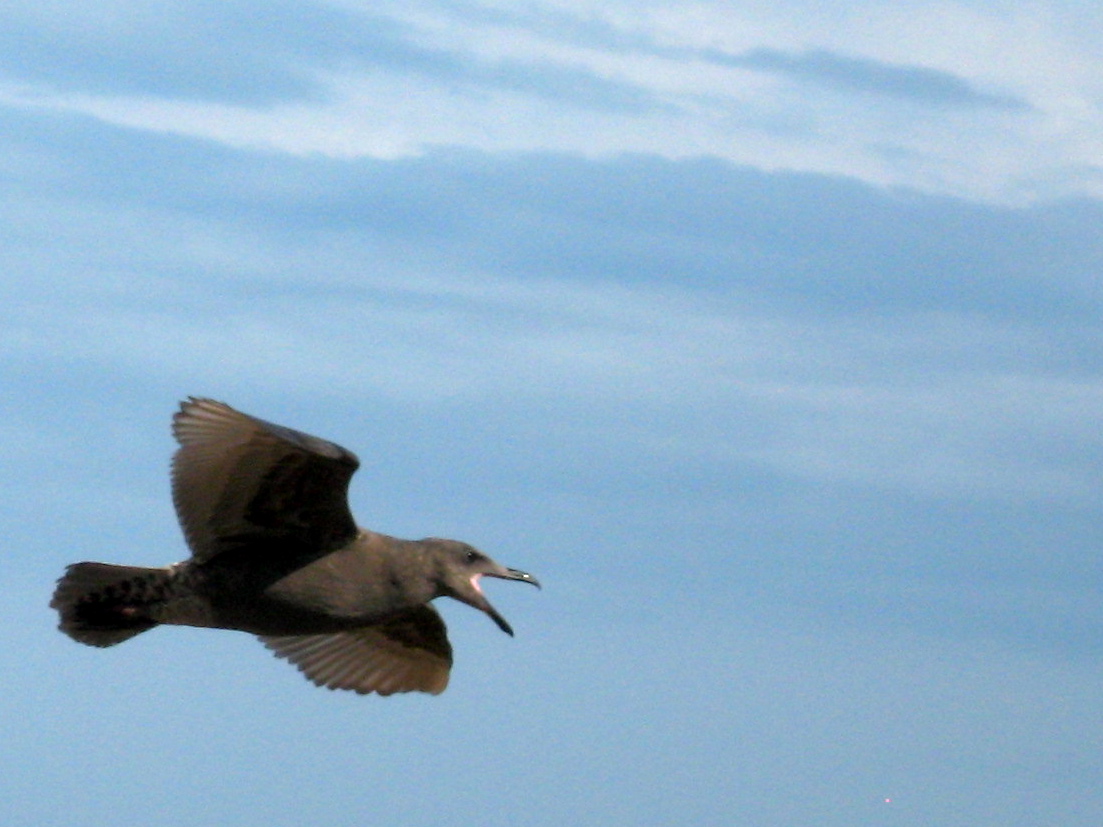The day started with a hazy, overcast sky and an ocean swell rolling in from the open Pacific. Although visibility was 10 to 15 nautical miles, the marine air gave everything a soft, muted look and both Port Angeles and Victoria looked further away than they actually are. In the morning, winds were light to gentle breezes starting in the southwest and swinging over to southeast. In the afternoon it shifted to north-northeast and became noticeably colder and wetter.
The ocean swell became dramatic by mid-afternoon, exploding over north rock and making a rolling break into the jetty bay, surging right over the jetty. Although the barometer was higher today than it has been all week, it is now slowly dropping and Monday ‘s forecast is for more clouds, wind and rain. Hmmm sounds like October.
Whale watching activity was fairly brisk today with seven boats in the Ecological Reserve. Everyone was fairly well behaved. Seaking Adventures was certainly giving a lot of throttle in the Reserve, crossing from Great Race over to North Rock but that may have been because he was bucking the tide. There were also a couple of sports-fishing boats passing through the Reserve in a hurry, Foghorn Charters was one of those two.
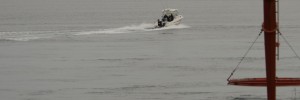
Some operators may not know that the speed limit is only 7 knots within the Reserve.
A large Humpback Whale passed through the Reserve westbound, late afternoon, there were no whale watching boats around.
A lot more gulls arrived with the cool wet weather and are roosting just about everywhere on Great Race now. I am curious what the numbers will be for this week’s census on Wednesday.
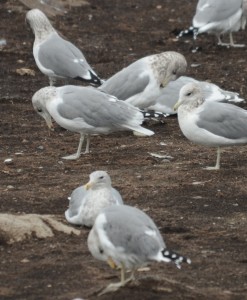 California Gulls resting and preening on Great Race.[/caption]
California Gulls resting and preening on Great Race.[/caption]
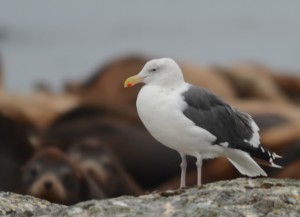
Western Gulls are a little north of their usual range here and hard to distinguish from Glaucous-winged X Western Gull hybrids.
With the influx of California Gulls it is going to be tricky distinguishing and counting all the large gulls. A gull that is easy to distinguish and also a favorite of mine, is the Heerman’s Gull.
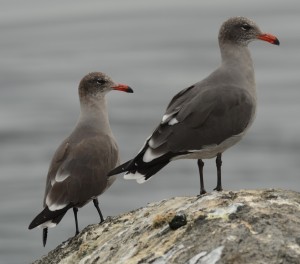
Heerman’s Gulls are our most exotic looking gulls.
Another avian visitor spotted today was the small to medium sized sandpiper pictured below, I think it is a Western Sandpiper but would like confirmation.
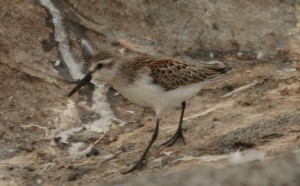
There were two young Elephant Seals on Great Race today and one of them was “tagged as a weiner in 2012” at Ano Nuevo Island in California “and hasn’t been seen since, so this is an important data point” according to Dr. Patrick Robinson, Año Nuevo Island Reserve Director.
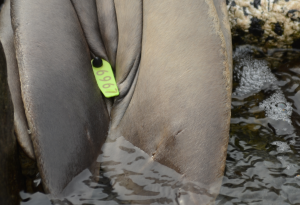
The second Elephant Seal was sleeping on the marine railway in the morning.
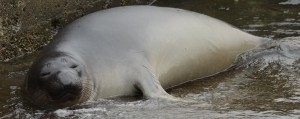
Race Rocks has become Canada’s main Elephant Seal colony. It is important as a fall haul-out location for sub-adults, as well as a winter birthing and mating site and spring moulting site.
Race Rocks is an ecological treasure located at a key location next to busy shipping lanes and popular sport-fishing grounds. I am thankful to those who had the vision to protect this amazing area and thankful to be able to experience it.
